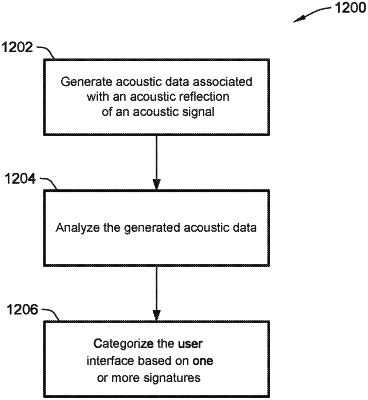| CPC A61M 16/024 (2017.08) [G16H 40/63 (2018.01); A61M 2205/3375 (2013.01); A61M 2205/6009 (2013.01)] | 38 Claims |

|
1. A method comprising:
generating acoustic data associated with an acoustic reflection of an acoustic signal, the acoustic reflection being indicative of, at least in part, one or more features of a user interface, a conduit, or both, wherein the user interface is coupled to a respiratory therapy device via the conduit;
analyzing the generated acoustic data, the analyzing including calculating a deconvolution of the generated acoustic data, the calculating of the deconvolution of the generated acoustic data including calculating a cepstrum of the generated acoustic data and further calculating a derivative of the cepstrum to determine a rate of change of the cepstrum signal, the analyzing including windowing the generated acoustic data based, at least in part, on at least one feature of the one or more features of the user interface, the conduit, or both, the windowing the generated acoustic data including a first windowing of the generated acoustic data based on a first window size and relative to the at least one feature and a second windowing of the generated acoustic data based on a second window size and relative to the at least one feature, with the second window size being larger than the first window size; and
characterizing the user interface based, at least in part, on the analyzed acoustic data of the second windowing.
|